Mountain biking holds the distinction of being both a fulfilling leisure activity, an incredible activity for physical fitness, and a competitive sport all in one. Mountain biking allows cyclists to see and experience majestic landscapes and receive a low-impact workout at the same time. Mountain biking is many things depending on the person’s favored goal with the activity, but what are the basics of mountain biking that cyclist enthusiasts need to know?
When starting mountain biking, it’s a good idea to learn how to use the brakes and to judge when you may need to stop or slow down. Additionally, beginning mountain bikers should learn how to feather the brakes based on the terrain. Practicing front, back, and side-to-side movements are also necessary.
Are you interested in learning the basics of mountain biking? Are you looking for general info about mountain biking both as a leisure activity and as a sport? If so, this article is for you as we will explore these questions and many more. In this guide, we will look at mountain biking history, mountain biking gear, and the various types of mountain biking to provide you with everything you need to know about mountain biking.
What Is Mountain Biking?
To begin, it is important to know exactly what mountain biking is. With this in mind, what is a mountain bike?
A mountain bike is a rugged and dependable bicycle that is built for off-road cycling. The tough and durable frames of mountain bikes are designed to stand up to the rigors of riding on rough tracks and trails.
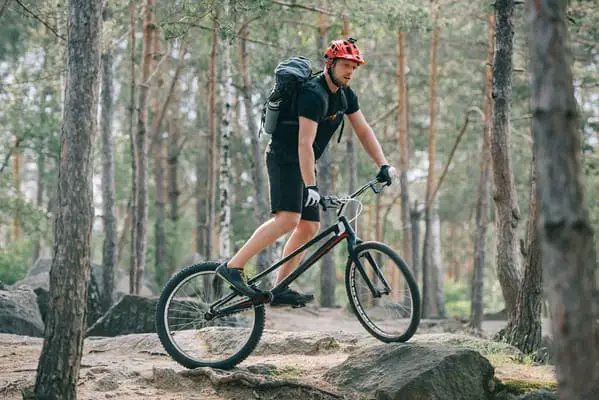
Entry-level mountain bikes usually have aluminum alloy frames and as you move in price range, the frames typically evolve into carbon fiber composite frames. Carbon frames are just as tough and durable as alloy frames but are much lighter and stiffer, which means the most durable of mountain bikes are designed for heavy-duty, mountainous terrain and competitive sport mountain bike racing.
The wide and flat handlebars of a mountain bike are designed to give you confident handling on rough terrain. Additionally, the powerful brakes of a mountain bike make it easy to control your speed, and this works well with the wide range of gears found on a mountain bike that make it easy to climb steep hills.
There is a large variety of tires available for mountain bikes. Generally speaking, wider and chunkier tires will give you more grip on challenging off-road tracks. Narrower tires with mellow tread will roll faster on smooth tracks and cycle paths (and are great for leisure mountain biking) but don’t give you a lot of grip on challenging terrain.
To make riding on the rough ground easier, mountain bikes have suspension to smooth the bumps when you ride over roots and rocks, as the suspension stops the bike from bouncing around.
So what is mountain biking? This is a type of cycling that can be done either as a leisure activity, such as riding through forests or in the foothills of mountain ranges or, mountain biking can be a full-on competitive sport.
Is Mountain Biking A Sport?
Mountain biking (MTB) is classified as an extreme sport, and can also be known as cross-country cyclings, such as the competition held quadrennially at the Summer Olympics in a men’s and women’s MTB race. The extreme part of the classification is due to the physically challenging, and potentially dangerous maneuvers in the sport that can lead to serious injury or death if the rider is not experienced in the sport of mountain biking.
But what makes mountain biking such a great sport is that, unlike traditional cycling races, MTB allows the rider to overcome challenging obstacles across rough terrain to meet their goal. This also requires a certain level of physical fitness, endurance, and a complete mastery of how to ride a mountain bike in all of the MTB disciplines, which we will discuss in more detail below.
MTB also requires a mastery of aerodynamic movements, as can be seen in motorbike racing, and riders have to be prepared to ensure they can cushion or limit drastic falls, such as when riding downhill or gliding over inaccessible patches in terrain.
Due to the challenges present in mountain biking, these are the details and dynamics of the activity that allowed MTB to become a full-fledged sport.
History Of Mountain Biking
Mountain bikes can trace their origins all the way back to the turn of the twentieth century in Europe. At this time, bikes were designed to help aid travelers and those delivering products by altering the frame and weight-load capacity of bikes to ensure smooth traveling over rough terrain.
But mountain biking as we know it today goes back to the 1970s when the sport of mountain biking was in its infancy in the plentiful wilderness found in Northern California, Marin County to be exact.
Basically, the sport evolved out of the hobbies of a group of teenagers in Marin County circa the late-1960s-early 1970s. A group known as the Larkspur Canyon Gang started riding through hills, valleys, and nearby mountain ranges using old single-speed balloon tire bicycles that regularly gave out due to the terrain.
During this time, these passionate bikers expanded the capabilities of off-road biking, and part of this came from the frequent refashioning and adding of parts to single-speed bikes to increase speed and braking capabilities.
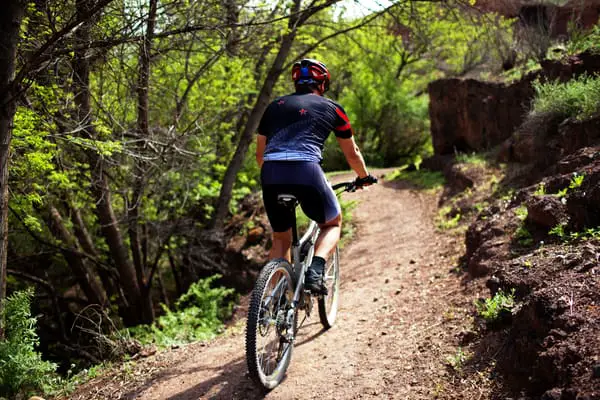
Throughout the 1970s, this innovation continued with new ideas implemented to existing bikes to fully master the off-road cycling experience. This would slowly but surely catch national attention and the creation of the first mountain bike by local Marin County native Joe Breeze in 1978.
Since then, and at a rapid rate in the 1980s, mountain bikes were continuously manufactured and customized to correspond with the rise of the dynamics that came with MTB racing and the emergence of mountain biking as a full-fledged sport.
Facts About Mountain Biking
Mountain bikes allow you to do so many things; from exploring the great outdoors, an escape from the stresses of life, to just having an old-fashioned good time outdoors. These facts are also what leads MTB racers to immerse themselves in the sport.
Here are some of the main facts about mountain bikes that are fairly universal when it comes to both beginner and seasoned mountain bikers.
Mountain Bikes are Fun
Riding a mountain bike is one of the most fulfilling types of cycling. These bikes constantly challenge you and give you both a sense of adventure and satisfaction or invigoration when you master some rough terrain or increase your endurance bit by bit.
You can also get a great ride out of practically any mountain bike, no matter the cost.
Sense of Freedom
The bicycle has been around for a very long time, and while it hasn’t changed much over the decades or centuries depending on how far back you look, it has changed in terms of its essence and its overall capabilities.
Bicycles provide a certain sense of freedom, and this can be interpreted in many different ways. Some of us use our bikes to escape the struggles and routines of everyday life. Bikes provide us a way of unwinding and momentarily forgetting all the requirements we need to meet in our lives. Mountain bikes can take this sense of freedom to even more fulfilling levels of unwinding.
The mountain bike allows you to experience all the joys of bicycling in off-road conditions in the thick of nature and the wilderness. Mountain biking can allow you the freedom to explore places you may have never thought of exploring or, places that were perhaps not feasible to explore solely on foot.
There is nothing quite like riding your mountain bike along a forest trail, watching a summer sunset across the mountain range, or gliding through the fallen foliage during the autumn.
The sense of freedom that mountain bikes offer can be incredible.
Social Aspects
There is something about mountain bike riding that brings people together. Whether it’s over a common passion for everything two-wheeled, the outdoors, or improving physical fitness–you would be hard-pressed to ever find a moody mountain biker.
Additionally, several bikers are always guaranteed to turn up at any central-trail riding spot, where you can rest assured that like-minded people will be joining you on this trail, everybody connected by their passion for MTB.
This helps to encourage you to ride your bike more, and really just shows the best things about mountain biking, but mountain bikers as people as well.
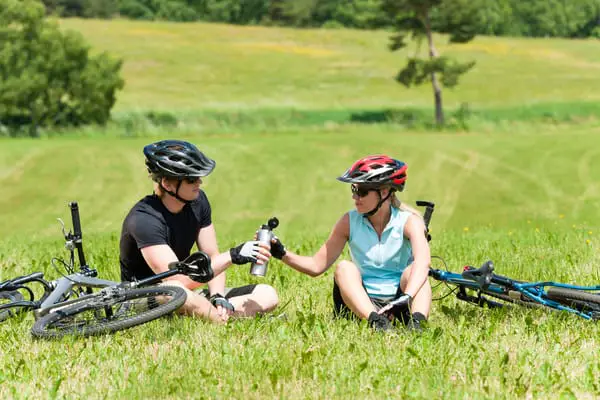
Bike Technology
The word of cycling doesn’t sit on its laurels for long, there is always a steady stream of progression and change in some way, shape, or form.
We have seen huge leaps in the last decade alone in bike technology, dropper posts are the norm, as are one bike groupsets, but even these new innovations have changed rapidly. Dropper seats are now electric, bike geometry is being pushed further and constantly changing, and most importantly of all, and because of this, tech is also changing what we ride and how we ride it.
A great example of this is the World Cup Cross Country that has shown how tracks have become more technically demanding. This means both the bikes and the riders have had to adjust because of this.
With this in mind, who knows where MTB will be in just 10 years from now, which is what is great about the constantly shifting world of bike technology.
Physical Fitness
When it comes to riding a bike, exercise can be thought of as just another byproduct of physical exertion. But if you do set out to get physically fitter, then mountain biking can be the most perfect type of exercise.
With that in mind, mountain bikes are a great tool to boost your physical fitness. You can use a mountain bike if you are just starting out in a quest to get leaner and faster within a few short weeks, and let’s face it, riding a bike in the open outdoors can be way more satisfying than being stuck in a gym, and you can still listen to your favorite songs as you give your body a challenging workout.
Mountain biking can even be appealing on days when you are feeling lazy overall. Just basic strides and strolls with your mountain bike can burn calories and awaken your muscles, specifically in a low-impact intensity.
If you are looking to lose weight, a lean diet is important, but 45 minutes to one hour of MTB per day can fulfill all of your exercise requirements.
The Outdoors
It is worth reiterating how synonymous mountain biking is with the great outdoors. After all, this is entirely what mountain bikes were designed for. It is scientifically proven that fresh, natural air and sunlight are good for overall human health, and there is no better place to take in the fresh air than the wilderness, far away from pollution and congestion.
Many sports and activities are based outdoors, but mountain biking offers incredible accessibility in that you can literally explore nature anywhere in the world and be well-equipped to get across rough terrain.
Walking and running can only take you so far, and riding a mountain bike is also a bit safer when exploring nature.
These benefits of mountain biking are just a few of the main positive aspects you can expect from the sport, and you can also think of these facts as important tips for mountain biking as well.
Types Of Mountain Bikes
There are two basic types of mountain bikes: hardtails and full-suspension bikes.
Hardtails have a suspension fork up front and the rear wheel is connected rigidly to the frame of the bike. Hardtails are generally the most affordable type of mountain bike.
Full suspension bikes, in addition to having a fork at the front, have a rear suspension system controlled by a rear shock. These mountain bikes are for much smoother riding over rough ground and are typically used in racing.
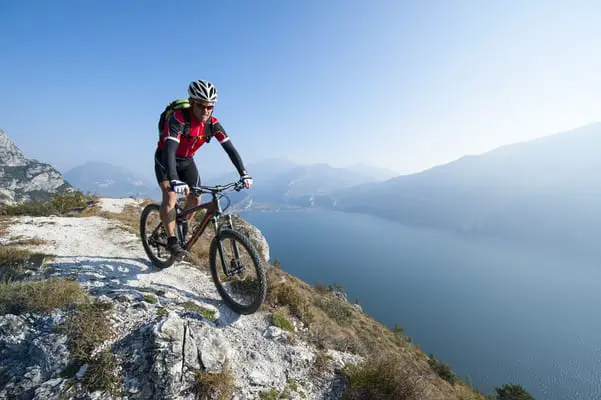
Therefore, hardtails are more efficient on smoother terrain, are faster to accelerate, and are often quicker on mellower, off-road tracks. Full suspension bikes are for when the going gets really rough; if you are riding challenging terrain, the full-suspension bike is usually quicker, although many riders still prefer a hardtail because these bikes are so easy to maneuver.
Extreme Mountain Biking
Whenever you hear MTB described as extreme, this basically means that the mountain bikers are likely seasoned pros in the field and are going to be doing a great deal of downhill mountain biking.
Because MTB racing takes place on unstable ground and terrain, the high speeds at which bikers travel can potentially lead to some serious dangers if the biker isn’t experienced. Extreme mountain biking is also commonly referred to as downhill MTB.
Extreme Downhill Mountain Biking
Downhill mountain biking, in many ways, can also be referred to as the very first form of mountain biking, certainly MTB racing. Back in the early 1970s, the very first off-road bikes were first raced in Marin County, California. Although downhill racing has changed a lot over the years, the very first concept is still basically the same: top of the mountain to the bottom as fast as possible.
Extreme downhill mountain biking is often likened to downhill skiing in how the idea is the same. The riders smash open the start gate and then race down the terrain as fast as possible across rocky terrain that is almost unrideable if a fast speed is not used.
The rider that crosses the finish line in the fastest time is the winner. The tracks selected can be as long as 6 minutes with the 600-meter drop to the finish, and high-speed sections with large jumps that require tried and true experience and practice to execute perfectly.
Downhill races typically take place in the summer, and riders are typically taken to the top of the terrain by a ski lift. Furthermore, downhill bikes have around 200 millimeters of suspension to soak up the punishing terrain, and large disc brakes will help disperse the heat that builds up, and the tires are built super tough with thick sidewalls and sticky rubber.
Wide and high handlebars along with a short stem will help get the weight behind the bike for downhill riding.
The pinnacle of downhill racing is the World Cup Series, which is a championship of six to eight events that take place around the world. The rider with the most points at the end of the year is awarded the World Cup title.
Additionally, extreme downhill MTB has a yearly one-off race known as the World Championship, and in this race, the top riders are all fiercely competitive, which makes this race an exciting spectacle, both for professional MTB riders competing and for spectators.
For both of these competitions, practice is absolutely crucial, as is the case with nearly all professional sports–MTB is no different, and riders need to put in countless hours of practice year-round in preparation for these races.
Although extreme downhill MTB racing does come down to technical riding ability, the riders also need a superb level of fitness, particularly lower body fitness. Many of these top races can hit up to 2,000 watts of maximum power and regularly hit over 1,000 watts of power in just one run.
With a rider’s heart rate at near maximum capacity for the entire duration of the run, and coupled with the stamina needed to practice at maximum capacity for at least a few weeks before, downhill racers need to ensure that their bodies are 100% fit.
Urban Mountain Biking
Urban mountain biking refers to the practice of using your mountain bike throughout the day and non-stop as opposed to just scheduling MTB time when you can.
Essentially, urban MTB is all about taking advantage of all the difficult, man-made terrain inside of city limits, such as stairs, back alleys, side roads, slopes, and even bike-designated traffic ways. If you love MTB, urban MTB is certainly possible, and it doesn’t matter where you live or even how to spread out your daily commute is.
Obviously, you have to plan accordingly and set enough time to allow yourself to reach your destination, which is crucial if you plan on taking your mountain bike to work with you. You may also want to pack your work outfit with you to avoid any mishaps along the way, such as arriving at work covered in mud or dirt.
The key to any good urban MTB ride is planning, and something like Google maps is ideal for this to ensure you know your exact route to reach your destination. If your destination from home to work, for example, is quite far away, you will want to take advantage of any and all green, wooded areas to cut your time down.
Urban MTB is a great way to maximize your daily workouts, and also a great way to experience city life in real-time and up close. We can go most of our lives by not even truly experiencing the areas we live in when you take into account how we are almost always traveling around town in a vehicle. Urban MTB allows you to bypass this mundane daily routine, and also spend more time doing what you love.
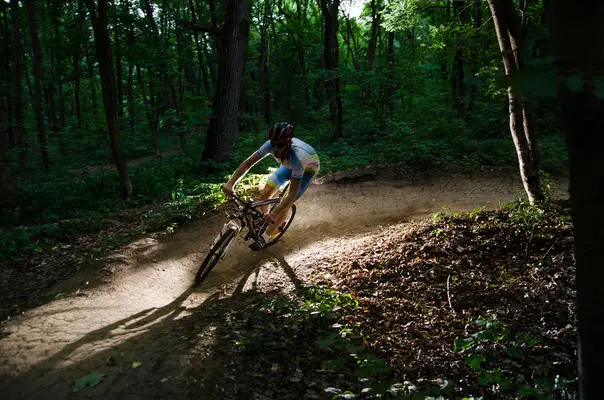
Enduro Mountain Biking
Enduro mountain biking is a relatively new style of MTB racing. Enduro MTB is quite similar to a rally-style format of basic MTB racing in that you have set transition times, accumulative stage times of between 4 or 5 in a day, or, in non-racing terms, Enduro can just mean a big day out in the mountains exploring the wilderness while still prioritizing some racing specifics.
Instead of being a downhill race, you don’t have to be that good; you basically ride for the entire day, from the top to the bottom of a mountain or valley, and you are also, although not required, racing with your fellow MTB riders. Enduro is essentially a style of MTB racing but in a much more stripped down and carefree style when compared to downhill or cross-country racing.
The race format for Enduro is almost entirely structured around endurance, from which the style gets its name. Most Enduro races are around 30-55 kilometers in distance, with at least 4-8 stages, which can be incredibly tough. But only the stage times are what counts towards your overall time minus any delays.
Stage times can vary quite a bit depending on what event you enter. For the grassroots events, times can sometimes be about 2 minutes but can go as high as 20 minutes for alpine events. Alpine events are the most challenging, and this involves racing from the top of a mountain all the way back down to the bottom.
If you are thinking about trying Enduro MTB racing, it is best to start at grassroots events. This allows you to build up your stamina with experience before you decide to take on the more challenging Enduro races, such as Alpine. Enduro racing events have limited practice times, and generally, you might only get between 1-2 runs.
A great tip for this is to equip your helmet with a camera, which allows you to look back over the footage of your racing to identify any key spots that might be challenging.
A typical Enduro bike would have between 27 and a half to 29-inch wheels with up to 140 mm of travel, but if you are a hardtail fan, these grassroots events do have many Enduro fans still racing on hardtails.
But as far as equipment needed for Enduro racing, you just need your helmet, a good pair of gloves, and it would help to have knee pads as well.
Cross Country Mountain Biking
If you watch the MTB races at the Summer Olympics every 4 years, you are probably already aware that MTB racing can sometimes often be called cross-country racing as well.
Cross-country is probably the most popular form of organized mountain bike racing. What’s very different about cross-country when compared to something like Enduro or downhill racing is that there is a mass start of every racer and you can see your position in the race.
Cross-country riders are well-disciplined and can descend from the starting point super fast. All of these qualities are what make cross-country MTB the perfect style of MTB racing in something like the Summer Olympics.
Cross-country racing can mean a number of different things depending on who you ask. It can mean everything from as simple as getting out for a huge ride out in the wilderness to exploring a new region or, and more commonly, it can mean the racing element.
Cross-country racing has been going on as a World Cup event for quite some time and became an official Olympic Sport at the 1996 Atlanta, Georgia games.
Is Mountain Biking Dangerous?
For as much fun as MTB racing and riding can be, mountain biking is dangerous. It is very easy to fall at a high speed and break virtually any bone in your body, including some serious injuries that can lead to paralysis, and yes, even death.
But if done safely and with enough practice for more challenging MTB pursuits, mountain biking is not anything to be afraid of in the short or long term. Let’s take a look at some safety tips to keep in mind to prevent any dangers associated with MTB.
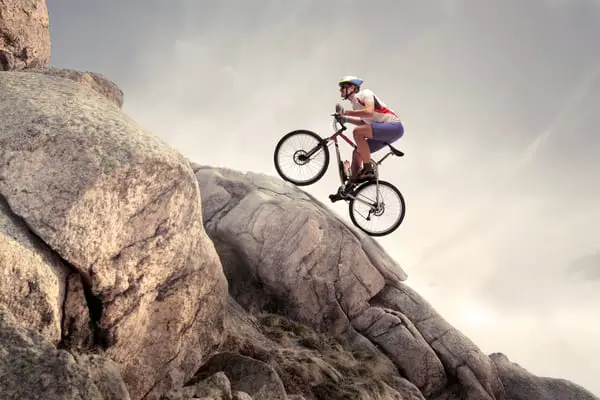
Know Your Riding Skill Level
It’s both natural and good to push yourself a little bit when it comes to gaining knowledge and endurance with any physical activity. But it is also important with MTB to only progress to more advanced forms of MTB once you have completely mastered the basics of MTB and are familiar with any risks.
If you are the type of rider who is always trying stuff above your level every step of the way, then you can expect that you are going to crash a lot more than a beginner that uses caution when advancing through professional levels of MTB racing. Definitely try and rein in any risk endurance that you may be feeling in the heat of the moment.
Never ride or race when you are tired, stressed, or otherwise not feeling 100% invested in MTB. This can almost always lead to an accident.
Keep a Riding Kit
In addition to all of the appropriate equipment and clothing you need to bring for MTB, it is also a good idea to always carry a first-aid kit with you when riding, and certainly when you are racing. You can keep this kit in your vehicle, but if you are going to be in desolate and remote areas, it’s a good idea to carry this kit with you in your backpack.
Technology
Modern technology can definitely help you out in an emergency situation. Having your cell phone in your pocket, which will allow you to call someone on the phone 9-1-1 in the case of an emergency can be very beneficial and even life-saving.
Some modern devices, such as activity trackers like those available from Garmin and Fitbit, also have tracking features that you can share as a link to friends or family members that show your exact location at any given moment or at any timed moment that you may set in the device.
Pre-Planning
Pre-planning can be a big part of staying safe while mountain biking. Knowing the route you are going to ride if you are going for an epic ride, and sharing that with someone else back home can be incredibly safe and beneficial. You can also use pre-planning with something like Google maps to know the exact parameters of the terrain you will be riding in and any applicable escape routes you can take to easily find yourself back to civilization.
How To Start Mountain Biking
A good place to start is deciding what to wear when mountain biking. Always opt for a good, sturdy pair of flat shoes with a strong rubber sole. Skating shoes translate well to mountain biking. This is because the pedals that should be used for beginning mountain bikers should be flat. As you advance, you can invest in sturdier and more intensive MTB shows which provide you with a lot of grips that are essential for racing.
Knee pads are also a must for mountain biking. Knee pads help protect your knees as well as your knee bone if you ever have a crash, and chances are, somewhere along the way, you will likely have a minor fall/crash at some point. Wearing shorts or long pants is always best for MTB; always opt for long pants during the fall and winter months to prevent drops in body temperature, and long pants can also help protect your skin better.
You may not want to wear jeans since this type of pants can cause discomfort after some time. Always wear a cycling helmet at all times, but most crucially if you are racing or competing.
If you are deciding where to start riding, consider going to a trail center for MTB or dedicated walking and biking trails in your region. If you have never mountain bikes before, always start with a beginner’s trail, which is often color-coded as green. Green trails are very mellow and present only cosmetic challenges that can easily be overcome.
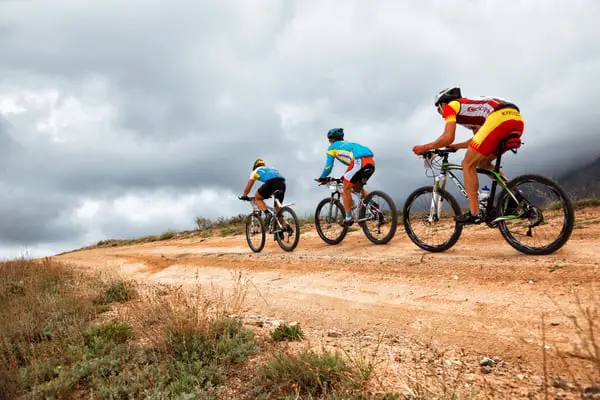
As you gain experience, you can advance to the higher coded trails, and if you have become a serious mountain biker and are ready to race, you can then start to consider Enduro, cross-country, and eventually, downhill racing destinations–but all in good time.
Climbing, descending, hopping, jumping, cornering, pedaling, and shredding (a mixture of all disciplines) is what you will need to master and build up to on the road to becoming an experienced and competitive MTB racer.
A great way to learn these disciplines is to advance to riding in dedicated bike parks. Bike parks are fed by gravity, which basically means that you can expect to practice and hopefully master all of the above disciplines I mentioned above, which include a ton of jumping and cornering at high speeds and across very challenging terrain.
Bike parks are also coded to indicate the advancement process beginners to professionals need to master to become true MTB riders.
Also, there is a lot to be said for research and studying when it comes to advancing through MTB. You can watch actual rides and races on YouTube, follow MTB athletes on social media, and continuously train your brain to learn these techniques when you need a reference point if you just aren’t showing progress out on the trails.
MTB requires constant practice and experience to learn, and if you follow some of these tips, you will be well on your way to mastering mountain biking.
Can You Go For Mountain Biking With A Hybrid Bike?
Combining the efficiency of a road bike with the stable handling and wide gear range of a mountain bike, hybrid bikes are extremely practical. Also known as urban bikes, hybrids are great for city cycling as discussed above under Urban MTB.
Hybrid bikes are built around sturdy frames that offer a comfortable cycling position. Entry-level hybrid bike frames are made from basic steel or aluminum tubing. Aluminum frames are lighter, but steel frames offer a smoother ride. As you move up the price points, the quality of the tubing improves, which makes the bikes lighter and more responsive, as well as improving comfort.
The wheels of a hybrid bike are the same size as what you will find on standard road bikes, but the tires tend to be larger, which means you get more cushioning for a smoother ride. Hybrid bikes have MTB-style gearing, which gives you more levels of gears that can also make climbing much easier. You also get MTB-style brakes for more confident stopping power.
Additionally, flat handlebars give you a comfortable and stable ride.
Depending on the type of riding that you want to do, you can easily find the perfect hybrid bike to suit your style. When it comes to mountain biking, using a quality hybrid bike is best utilized in Urban MTB since both comfort and endurance are prioritized equally. You can certainly go mountain biking with a hybrid bike, and this is preferred by many riders.
